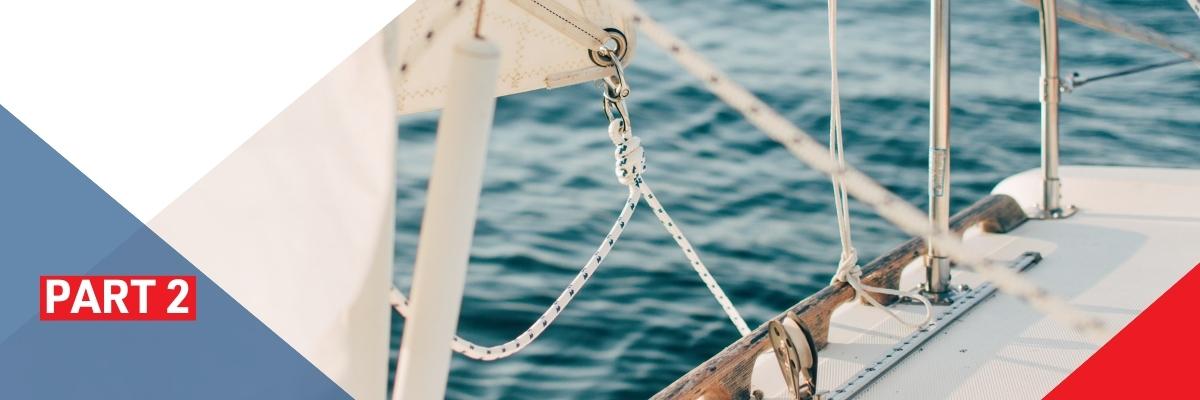At the new Start-up Pavilion on METSTRADE, innovators are keen to show their newly developed products that may change the boating and yachting experience. Here is a preview on the companies that have been officially confirmed.
“At the pavilion, we show both software innovations as well as new hardware products,” organiser Gabriella Richardson from Yachting Ventures shares. Using the connectivity that a lot of modern electronic devices already have, new intelligent software is developed to improve monitoring, safety and experience of boating. Some innovations require hardware however, to eliminate emissions from combustion engines for example.
Rental documents digitised
Working fully remote with skilled colleagues in Amsterdam, London, Alexandria Cracow and Poznan, Floatist embodies the modern innovative software provider. Their platform for yacht charter companies combines connections to the on-board systems with remote monitoring possibilities from the charter company office and an app for the customers. All of the documents for renting a yacht or boat can be handled over the app, the lists of necessities on board that are shown during the check-in is presented in the app, like the manuals of all the equipment on board. Customers can trouble shoot equipment that is not functioning themselves, often to find that some switch should be flipped. From the office, the charter company can register all the paperwork digitally and have all required document related to any yacht brought together. Performance of connected systems, fuel usage if connected, documentation of systems on board and financial details are presented in a single overview, making the administration of boat rental much easier. A track record of maintenance kobs for each yacht is registered. Founders, experienced as charter skippers, discovered the need to make charter companies more efficient and make the check-ins and service requests for customers much easier.
www.floatist.com
booking.com of boating?
Versatility appears to be the stronghold of German start-up Metarina, that offers a software platform for marinas and boaters to book berths and that offers marina management tools. A bit like the introduction of hotel booking platforms some decades ago, nowadays the marina booking platforms are competing to take a dominant market position. Three high school friends that all got into yachting after their studies and at some point occasionally met aboard a yacht in the Mediterranean. They gathered around a commonly felt mission to simplify communication between marinas and boaters and marinas among each other. Connected marinas, that may be commercial enterprises, public and municipal yacht harbours, yacht clubs and even marina associations can centralise their customer information and manage berth occupancy registration. Metarina claims to help marina operators to optimise berth occupation and make operations more efficient. Key to success with a booking platform remains customer acceptance and use. The boater’s app is not available on the platforms for mobile apps yet, as the software roll-out is in the development phase.
www.metarina.com
Sail on air
Air lubrication is a novel technology still in a quite experimental phase in inland shipping and under the hulls of sea going merchant vessels. While the ideas for air lubrication exist for more than two decades and vessels have been equipped with various systems that create a ‘carpet’ of air bubbles under the ships hull in order to reduce resistance of the hull in the water, the concept has not been presented as a product until now. Progressing from research programs into air lubrication conducted by the Norwegian R&D company Effect Ship International (ESI), start-up Pascal Technologies developed a hull form that is designed to effectively reduce resistance in the water by the use of an air-bubble layer under the hull. While the water resistance of the air lubricated hull is not very different from conventional hulls at low speeds, the increase of resistance that grows with higher speeds is significantly less when the hull rides over its air carpet. The AirHull consists of the air system, driveline, and batteries. All components are integrated and regulated by our ride control system. The platform architecture is scalable for boats from 6 meters to 30 meters. Lower resistance at higher speeds offers possibilities for electric boating. The Oslo-based team of Pascal there for provides the AirHull as a ready-engineered vessel with electric propulsion. The company aims to help reduce emissions in boating and yachting, rather than allowing combustion engine powered yachts to reach higher speeds. AirHull boats can be runabout motor boats, fishing boats, water taxis of passenger ferries.
www.pascaltech.com
Tube engine
Redefining marine electric propulsion, start-up Zparq from Sweden engineered an electric motor that is lighter, causes less drag and produces more power than electric propulsion has achieved before. Cooling water flows through thew middle of the tube-shaped engine, reducing drag and optimising flow along the propeller blades. As the rotor and stator of the electric engine are directly connected to the propeller blades, there are very little moving parts. The light design reduces raw material and CO2 footprint in the production phase, and the products are designed with a circular approach to reduce environmental impact and climate footprint over their entire life cycle. Zparq originates from a collaboration between the founders and Royal Institute of Technology in Stockholm (KTH), where the technology has been developed and tested on underwater robots and foiling vessels, since 2017. Zparq AB was founded in 2020. Santander InnoEnergy Climate Fund and Almi Invest GreenTech recently funded the start-up with 2.5 million euro to get production and distribution at a larger scale.
www.zparq.se
Check out other participants of the STP in the first article.













